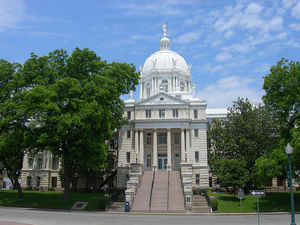Texas Counties
Texas is divided into two hundred and fifty-four counties, more than any other state. Texas was originally divided into municipalities, a unit of local government under Spanish and Mexican rule. When the Republic of Texas gained its independence in 1836, there were 23 municipalities, which became the original Texas counties. Many of these would later be divided into new counties. The most recent county to be created was Kenedy County in 1921. The most recent county to be organized was Loving County in 1931McLennan County, Texas
McLennan County Education, Geography, and History

McLennan County is a county located on the Edwards Plateau in Central Texas. Based on the 2010 census, its population was 234,906. Its county
seat is Waco. The county is named for Neil McLennan, an early settler.
McLennan County is included in the Waco, TX Metropolitan Statistical Area.
Etymology - Origin of McLennan County Name
Neil McLennan, an early settler in the future county
Demographics:
County QuickFacts: CensusBureau Quick Facts
McLennan County History
McLennan County was created by the Texas Legislature in 1850 out of Milam County. The county seat, Waco, had been founded originally as an outpost of the Texas Rangers, laid out by George B. Erath, and was known by 1850 as "Waco Village." The county is named for Neil McLennan, an early settler.
Handbook of Texas Online
McLennan County was established by the Texas legislature on January 22, 1850, and named for Neil McLennan,
one of the early settlers. The county government was organized in August 1850 with Waco as its county seat. The
county originally included its present area, as well as the land to the northwest as far as the northern boundary of
the Robertson colony; it was reduced to its present size in 1854, when Bosque County was established. Although
McLennan County was organized too late to be included in the 1850 census, its population at that time has been
estimated at several hundred. Rapid growth was possible because, within two years of the establishment of Waco
Village, the frontier was pushed well to the northwest of the area. The Indians who had lived there were moved to a
Texas reservation in 1854 and then to Oklahoma in 1859. Aside from Waco, the earliest communities in the county were
at Bosqueville and Bold Springs (later called West). Most of the settlers who came to the county before the Civil
War were Americans of English, Scottish, and Irish descent who moved from other
parts of Texas or from the southern United States. Many of them were well-educated, well-to-do people with money to
invest in the establishment of new towns, schools, and churches. The county was divided into school districts in
1854. Early public schools were located near the center of their district and generally carried the same name as the
nearby settlement. Districts usually charged tuition to raise money to pay their teachers. Population growth made
redistricting necessary in 1867 and again in 1884. Large-scale consolidation of common school districts into
independent school districts took place in the 1930s and 1940s. Several private schools, such as the Bosqueville
Male and Female College and the Trinity River High School (later Waco
Universityqv) added to the educational opportunities in the county. Paul Quinn College
moved to Waco from Austin in 1881. Waco was also chosen as the site of Baylor University
when Waco University and Baylor University at Independence were consolidated in 1886. McLennan Community College
was established at Waco in 1965. As in many Texas counties, extensive schooling was for many children a luxury that
took second-place to helping on the family farm. As late as 1940 only 14 percent of the population over the age of
twenty-five had completed high school. As the job market expanded during the next forty years, so did the percentage
of residents who finished school. By 1960 more than 21 percent were high school graduates, and by 1980 the number
represented nearly 60 percent of the population over twenty-five More at
Vivian Elizabeth Smyrl, "MCLENNAN COUNTY," Handbook of Texas Online (http://www.tshaonline.org/handbook/online/articles/hcm08),
accessed January 24, 2016. Uploaded on June 15, 2010. Modified on August 19, 2014. Published by the Texas State Historical Association.
Geography: Land and Water
As reported by the Census Bureau, the county has a total area of 1,060 square miles (2,746 km2), of which,
1,042 square miles (2,698 km2) of it is land and 18 square miles (48 km2) of it (1.73%) is water.
Neighboring Counties
Bordering counties are as follows:
- Hill County (north)
- Limestone County (east)
- Falls County (southeast)
- Bell County (south)
- Coryell County (southwest)
- Bosque County (northwest)
Education
Colleges
Baylor University
McLennan Community College
Texas State Technical College







